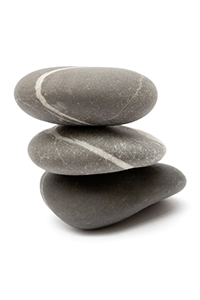Reviews
Learning to Heal: Reflections on Nursing School in Poetry and Prose just won 1st Prize Creative Works for American Journal of Nursing 2019 Book of the Year.
Award ceremony will be across the pond. Alas, I will not be attending.
Just learned that Learning to Heal won a Tillie Olsen Award in Creative Writing. (University of Kent, UK: Awards Committee of the Working-Class Studies Association) Below are some comments from the judges:
“Learning to Heal is the best kind of writing working class studies has to offer: actual workers telling their real-life stories with poetic, authentic, and instructional voices. I laughed, I cried, and I learned a lot as I read. An exceptional view into the inner lives of a too-often overlooked, but crucial, group of workers (mostly women, also, an often-over-looked group) that underlines the incredibly difficult and essential work of giving care to others. This book charts perilous human journeys of both nurses and their patients with grace, humor, empathy, and dignity.”
“A captivating collection of poems and personal stories, in which the work of nursing and the lives of those who undertake it are given voice. Time collapses—the stories don’t follow a chronological order, but instead we see the parallels between experiences, change in a wider context, and the kind of complex class, family, gendered, and racialized relationships that a straight chronology would simplify. The quality and ambition of the poetry is of the highest standard, and the blurring of roles that comes with being both an author and nurse foregrounds the varied trajectories that working lives may take.”
“The breadth of writing is outstanding—as co-editor Jeanne Brynner notes in her introduction, the age span of contributors ranges from recent graduates in their twenties to elders in their nineties. The anthology is also diverse in ‘gender, race, nationality, socioeconomic opportunity, and education,’ thereby sharing a range of experiences and, perhaps, changing and informing perspectives about who a nurse is and what a nurse does. At the same time, the writing is emotionally strong, creatively composed, and an important addition to the literature of ‘what work is.’ Learning to Heal should be required reading in all nursing schools.”
Fifty nurses share their poignant and inspirational stories
What is it like to be a student nurse? What are the joys, the stresses, the transcendent moments, the fall-off-your-bed-laughing moments, and the terrors that have to be faced and stared down? And how might nurses, looking back, relate these experiences in ways that bring these memories to life again and provide historical context for how nursing education has changed and yet remained the same?
In brave, revealing, and often humorous poetry and prose, Learning to Heal explores these questions with contributions by nurses from a variety of social, ethnic, and geographical backgrounds. Readers meet a black nursing student who is surrounded by white teachers and patients in 1940, a mother who rises every morning at 5 a.m. to help her family ready for their day before she herself heads to anatomy class, and an itinerant Jewish teenager who is asked, “What will you become?” These individuals, and many other women and men, share personal stories of finding their way to nursing school, where they begin a long, often wonderful, and sometimes daunting, journey.
Many of the nurse-authors are experienced, well-published writers; others are academics, widely known in their fields; but each offers a unique perspective on nursing education. Notably, an essay by Minnie Brown Carter and an interview with Helen L. Albert provide valuable ethnographies of underrepresented voices.
Through strong, moving essays and poems that explore various aspects of student nursing and provide historical perspective on nursing and nursing education, all have stories to tell. Learning to Heal tells them in ways that will appeal to many readers, both in and out of the nursing and medical professions, and to educators in the medical humanities.



